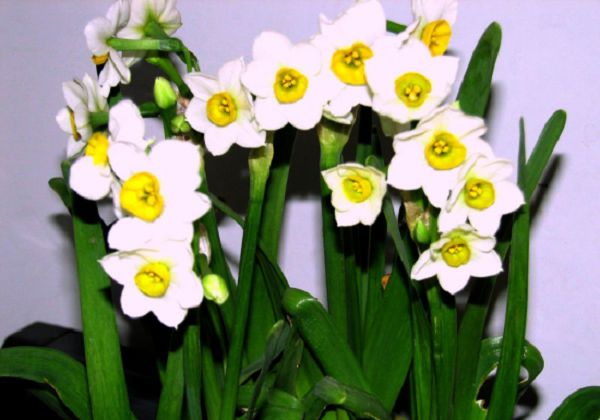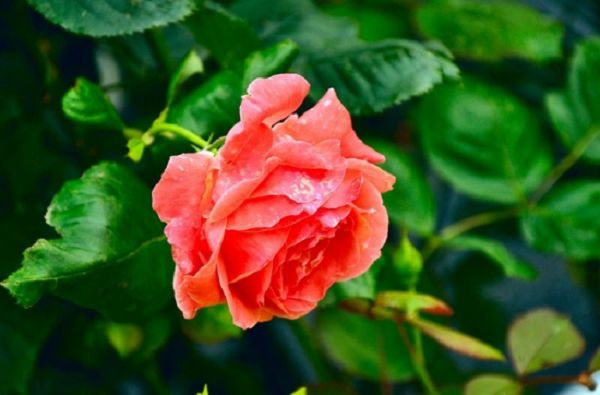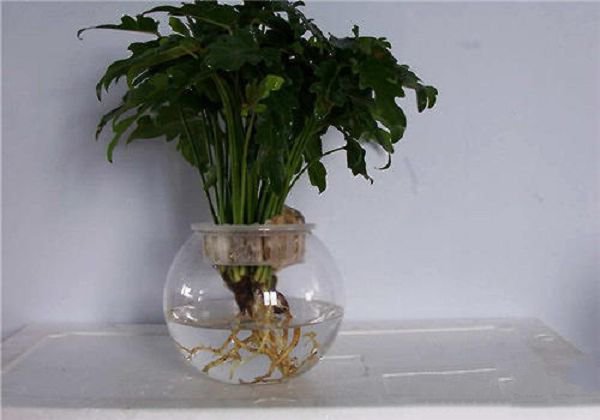What matters should be paid attention to in cultivating bulb flowers

Bulb flowers have strong habits, a wide range of uses, bright and colorful flowers, and flowers in four seasons. For example, there are daffodils in winter, hyacinths and tulips in spring, irises and lilies in full bloom at the turn of spring and summer, gladiolus and evening fragrant jade in summer, and Lycoris in autumn, while canna and dahlias bloom from summer to autumn.
In order to cultivate bulb flowers well, we should pay attention to the following problems:
1. The environmental conditions required for growth and development bulbous flowers are distributed from tropical to cold zones, from alpine to wetlands, so their biological characteristics vary greatly, and the natural conditions required by most species are as follows:
① sunshine bulb flowers in addition to some species of lilies (mountain lily, mountain Dan, etc.) can withstand semi-shade, other species all like the sun. The lack of sunlight not only affects the flowering of the same year, but also affects the flowering of the following year because the bulb does not grow fully.
② temperature is native to subtropical, tropical plateau or temperate regions. It likes warm climate and is generally suitable for planting in spring, so it is called spring planting bulbs, such as dahlia, gladiolus, late fragrant jade, etc., growing in spring, flowering in summer and dormant in winter. The species of the original Mediterranean climate region generally prefer cold climate and are more resistant to cold, so they are often planted in autumn, so they are called planting bulbs in autumn, such as Chinese daffodils, lilies, tulips, hyacinths, etc.; grow and bloom in autumn and spring, dormancy in summer.
③ moisture during the growth period, the soil must have proper moisture in order to maintain good growth and flowering. Too much moisture, easy to rot ball; too little, affect flowering.
④ soil generally prefers loose and fertile sandy loam. Sandy loam is beneficial to the hypertrophic growth of bulbs, while slightly clayey loam is beneficial to the full development of bulbs. Bulbous roots are generally long, and it is better to have deep topsoil and gravel mixed with subsoil.
2. The planting period of autumn bulb root is generally in the middle and late ten days of October, and the planting period of spring planting bulb root must be after the late frost period (after mid-April). When planting, choose bulbs of the same size, and the planting depth should be roughly the same, so that the florescence can be neat. Watering during the growth period can not be too much, otherwise the bulb root is easy to rot, fertilization must be fully mature, otherwise it is also easy to cause bulb rot. More phosphate fertilizer should be applied, because phosphate fertilizer is very important for bulb filling and flowering; at the same time, the application of nitrogen fertilizer is not excessive. The planting depth of bulb is usually 3 times that of 2mur. the clay is slightly shallow and the sand is slightly deep. there are a few exceptions, such as late fragrant jade, green onion cover only and the top of bulb, and Zhu Dinghong exposes the bulb 1Comp3 to the soil surface. After flowering, the residual flowers should be cut off in time, and the management of water and fertilizer should be strengthened to promote the development of bulbs. When the leaves naturally wither, the bulbs will be dug up, dried and collected in stages for future planting.
3. Matters needing attention in cultivating bulbous flowers:
For the purpose of flower viewing, ① should remove all the daughter balls attached to the mother ball so as not to consume nutrients and affect the flowering of the big ball; if it is for the purpose of cultivating the small ball, it should be planted with the ball so that the small ball has sufficient nutrients and grows rapidly.
② is not suitable for transplanting during the growth period because the roots of most bulbs are brittle and tender, easy to break, and not easy to regenerate after breaking.
Most bulb flowers in ③ have a few leaves and a certain number, so we should pay attention to protect the leaves in order to prevent damage and affect the growth and development. When used as cut flowers, we should also leave more leaves to facilitate the production of nutrients for new bulb growth.
Related
- What if the leaves of potted flowers turn yellow?
- Florescence Control of several Flowers
- Anti-freezing technology and post-freezing nursing technology of flowers
- What is the classification of flowers? What are the common methods of flower classification?
- Prevention and control of alkali and acid damage of flowers in courtyard
- Technology of Anti-freezing and restoring growth of Flower seedlings in greenhouse and greenhouse
- How does flower fertilization not hurt the root? Fertilization technology of flowers
- Key points of disinfection in flower greenhouse
- Several pesticides that are banned or used cautiously in flowers
- How to fertilize the flowers that watch the leaves?



